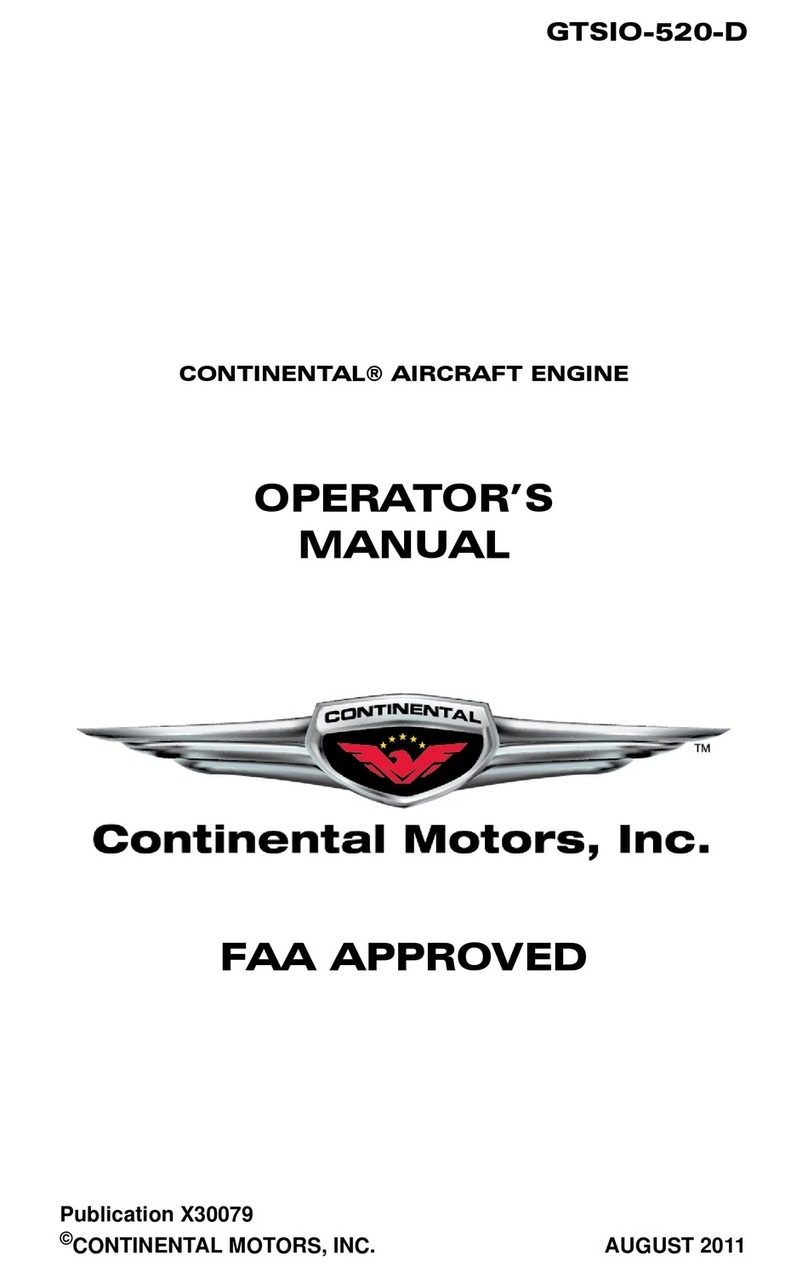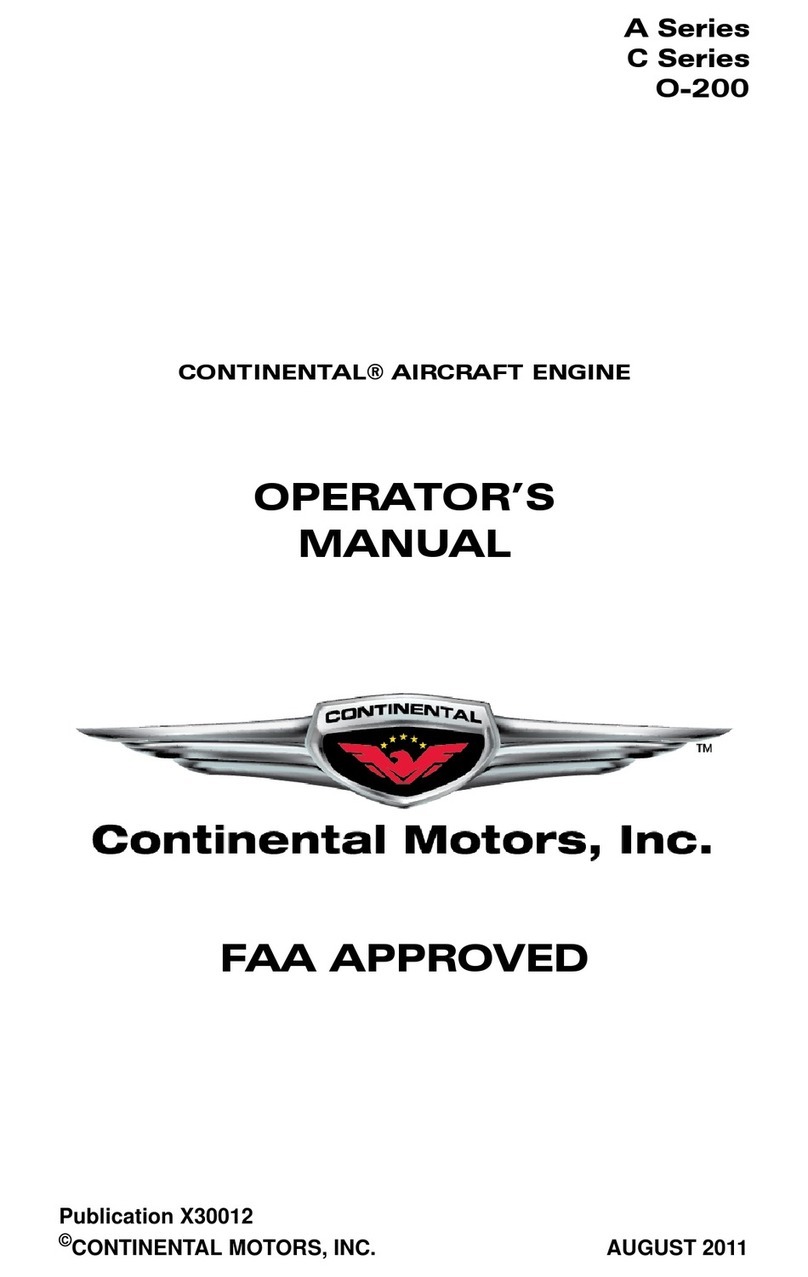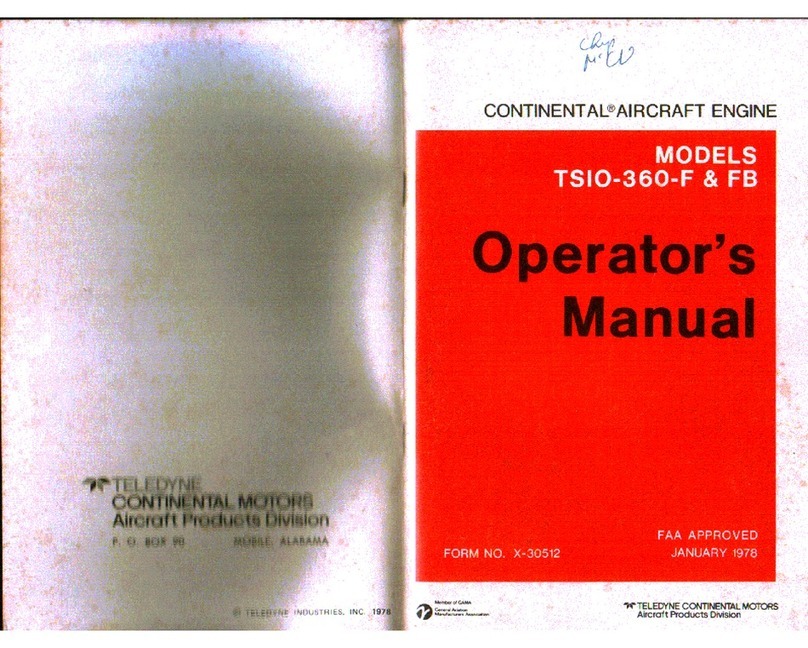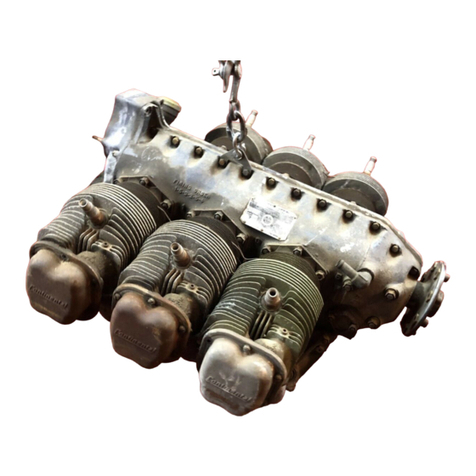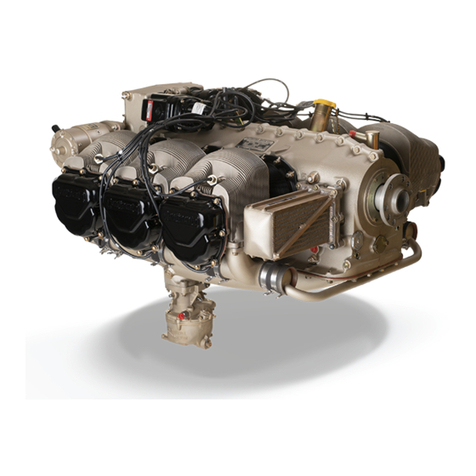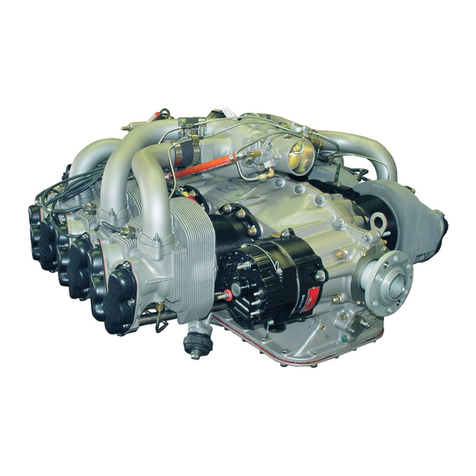
A TSIO-520-BE Permold Series Engine Maintenance and Operator’s Manual
CHANGE 2 15 October 2013
Supersedure Notice
This manual revision replaces the front cover and list of effective pages for Publication Part No. X30570, dated
February 1990. Previous editions are obsolete upon release of this manual.
Effective Changes for this Manual
0 ..............February 1990
1 ............ 31 August 2011
2 .......... 15 October 2013
List of Effective Pages
Document Title: TSIO-520-BE Permold Series Engine Maintenance and Operator’s Manual
Publication Number: X30570 Initial Publication Date: February 1990
Page Change Page Change Page Change Page Change
Cover............................ 2
A................................... 2
i thru iv.......................... 0
1-1 thru 1-10.................0
2-1 thru 2-42.................0
3-1 thru 3-8................... 0
4-1 thru 4-4................... 0
5-1 thru 5-8................... 0
6-1 thru 6-8................... 0
7-1 thru 7-6................... 0
8-1 thru 8-6................... 0
9-1 thru 9-12.................0
10-1 thru 10-12.............0
11-1 thru 11-4 ............... 0
12-1 thru 12-2...............0
13-1 thru 13-15.............0
Published and printed in the U.S.A. by Continental Motors, Inc.
Available exclusively from the publisher: P.O. Box 90, Mobile, AL 36601
Copyright © 2011-2013 Continental Motors, Inc. All rights reserved. This material may not be reprinted, republished, broadcast, or otherwise
altered without the publisher's written permission. This manual is provided without express, statutory, or implied warranties. The publisher will
not be held liable for any damages caused by or alleged to be caused by use, misuse, abuse, or misinterpretation of the contents. Content is
subject to change without notice. Other products and companies mentioned herein may be trademarks of the respective owners.
